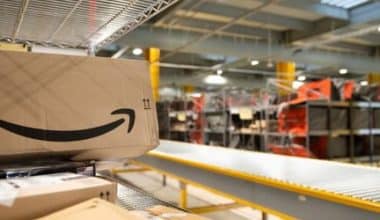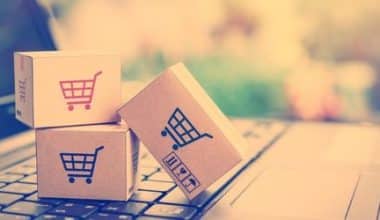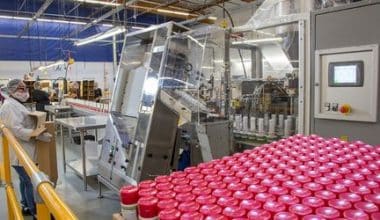Definition Of Recession
A recession is a sizable, pervasive, and protracted decline in economic activity. Although more complicated formulas are also used, a general rule of thumb is that a recession occurs when the gross domestic product (GDP) grows at a negative rate for two consecutive quarters.
Additionally, the National Bureau of Economic Research measures recessions using nonfarm payrolls, industrial production, and retail sales, beyond negative GDP measures. However, there is no fixed rule on which measures contribute information or how they are weighted in decision-making.
Note that:
- A substantial, widespread, and long-lasting decrease in economic activity is referred to as a recession.
- From the peak of the previous expansion to the low point of the downturn, economists calculate the length of a recession.
- Recessions may only last a few months, but it might take years for the economy to bounce back and reach its previous peak.
- The last 10 recessions have all been predicted by an inverted yield curve, though some of those recessions never happened.
- Many people may perceive the initial stages of a rebound as a continuing recession because unemployment frequently persists at high levels throughout an economic recovery.
- Countries use monetary and fiscal policies to reduce the likelihood of a recession.
According to the NBER’s definition, a downturn must be severe, pervasive, and protracted, but these designations are made after the fact because there is no definitive way to spot a recession as soon as it starts.
What Would A Recession Mean?
Although recessions are still frequent, most sectors of the economy have grown steadily since the Industrial Revolution, with few exceptions. According to the International Monetary Fund, there were over 120 recessions between 1960 and 2007 that, roughly 10% of the time, impacted 21 advanced economies.
Recessions are now less frequent and last for shorter periods of time. Recession-related decreases in economic growth and employment may spiral out of control. For instance, declining consumer demand may force businesses to lay off employees, which may have an impact on consumers’ purchasing power and further erode demand.
The wealth effect can be reversed by bear markets during recessions, which lower wealth and lower consumption. Governments have implemented monetary and fiscal measures since the Great Depression to prevent recessions from getting worse. Additionally, both automatic policies like unemployment benefits and targeted initiatives like lowering interest rates to encourage investment are examples of these stabilizing elements.
Why Do Recessions Happen?
Recessions are a result of the cyclical nature of the U.S. economy, which expands until it reaches peak performance, then falters until it bottoms out in a recession. Economic indicators, such as unemployment claims, are particularly interesting as they tend to occur just before changes in the economy.
The Federal Reserve plays a crucial role in moderating economic cycles by adjusting the federal funds rate and taking other actions that affect the economy. In September 2022, the Fed raised its target range for the federal funds rate to 3 to 3-1/4 percent, indicated further increases would be appropriate, and took other actions to lower inflation, which was higher than the Fed’s long-term target of 2%.
What Causes Recessions?
Economic theories explain why and how an economy goes into recession and are categorized as economic, financial, psychological, or a combination of these factors. Some focus on economic changes, such as structural shifts in industries, while others suggest financial factors, such as credit growth and financial risks.
- Monetarism suggests recessions are caused by insufficient money supply growth.
- Psychological factors, such as overexuberance and deep pessimism, also contribute to recessions.
- Keynesian economics combines psychological and economic factors to prolong recessions.
What Happens During A Recession?
Recessions can affect people and families in a variety of ways.
#1. Loss of jobs:
Businesses cut staff when the economy slows and reduce their spending on things like advertising, training, product research, and other operations. As businesses cut jobs to cut costs, payrolls decline.
Therefore, If you need to change jobs during a recession, extending your education, networking with your professional colleagues, and keeping up with industry trends may be of assistance to you.
#2. Health consequences:
According to the Social Security Administration, there were numerous repercussions for workers who lost their jobs during the most recent recession, which lasted from 2007 to 2009. Employees’ employment and earnings were affected by job losses, as were their financial security, health insurance coverage, and retirement savings contributions.
Even after the recession ended, employees who lost their jobs were more likely to receive government “safety net” benefits like disability insurance and supplemental security income.
#3. Student loans:
Recessions can impact younger adults, who may struggle to find or maintain jobs during downturns. Delays in employment can reduce asset accumulation over their lifetimes. Higher student loan debt can exacerbate these challenges.
Therefore, paying down student debt now can provide financial flexibility during recessions, especially if you are unemployed or accepting lower-paying jobs.
Opportunities. Not everyone is affected the same way by recessions. For instance, some companies are said to be “recession-proof,” which means they don’t suffer as badly when the economy is weak.
Examples include the provision of emergency response teams, auto repair facilities, beauty salons, and other products and services that people require despite economic ups and downs.
How You Can Prepare For A Recession
#1. Boost your savings:
If you lose your job, ensure you have enough savings to cover bills for a month, two, six, or a year. Therefore, start building savings today to reduce the risk of maxing out credit cards, raiding retirement accounts, selling valuables, borrowing from friends, or moving in with parents or adult children.
#2. Pay off debt:
Paying off debt reduces interest expenses and frees up income for other needs. Therefore, focus on debt that improves your financial situation, avoid borrowing more than you can repay, refinance to low-rate mortgages, and avoid high-rate credit cards.
#3. Prioritize purchases:
Consider your needs versus wants, and review your budget to identify items you can eliminate or put on hold. This can save thousands of dollars annually, promoting recession-proof living.
#4. Make Your Career Recession-Proof:
Consider updating resumes, learning marketable skills, networking, and seeking a promotion for a secure job. A second job or side hustle can help you survive recessions and job losses.
What Is Inflation?
Inflation is the increase in the cost of products and services across the entire economy or nation. Demand or a rise in the costs of production are the two factors that cause inflation. Additionally, political, economic, and social factors influence demand and production costs.
Furthermore, inflation reduces the value of money as a unit of exchange. As a result, customers eventually pay more for goods than they did previously.
Therefore, the ability to gauge changes in a country’s cost of living is a crucial financial indicator. An economy should strive for low, predictable inflation because it stimulates economic activity.
What Is The Difference Between A Recession And Inflation?
Let’s examine a few aspects in which recession and inflation differ from one another.
| Inflation | Recession |
| Inflation is defined as the increase in the price levels of goods and services in an economy | A recession is defined as a time when the economy slows down and there is negative growth. |
| CPI (Consumer Price Index) and WPI (Wholesale Price Index) are two indices used to calculate inflation (WPI) | Reductions in a country’s Gross Domestic Product are used to gauge recessions. |
| The economy experiences continuous inflation. | A recession happens as a result of specific economic circumstances. |
Which Country Is In Recession?
As of September 2021, several countries were in recession or experiencing slowdowns due to COVID-19, political instability, and natural disasters. Countries like Argentina, Brazil, Venezuela, South Africa, Turkey, and Lebanon were affected. However, the economic situation could have changed since then, and other countries may also be experiencing similar challenges.
Is A Recession Good Or Bad?
Although recessions often have many negative effects, they can also give the markets the necessary reset. Savers benefit from the increased interest rates that frequently accompany recessionary periods, while homebuyers may benefit from lower interest rates as a recession ends.
Who Causes A Recession?
A recession can be caused by a number of different things, so there is not just one single cause. A recession is typically defined as a time of deteriorating economic activity, including a contraction of the GDP, an increase in unemployment, and a decline in consumer spending.
Some of the factors that can contribute to a recession include
#1. Financial crises:
By causing huge economic instability and a decline in consumer and business confidence, financial crises, such as a banking collapse or a stock market crash, can start a recession.
#2. Economic imbalances:
Whenever there are disparities in the economy—such as inflation, high debt levels, or a trade deficit—businesses and consumers may become more frugal with their spending, which can trigger a recession.
#3. External shocks:
External factors that disrupt supply chains and undermine consumer and corporate confidence include natural disasters, geopolitical unrest, and global pandemics (like COVID-19).
#4. Policy errors:
By aggravating economic imbalances or fostering financial instability, economic policy errors caused by governments or financial institutions, like improper fiscal or monetary policy, can therefore contribute to a recession.
What Is The Opposite Of A Recession?
Economic growth, or expansion, is the opposite of a recession. Expansion refers to a period of rising economic activity, such as a rising GDP, falling unemployment, and rising consumer spending.
An expansion leads to increased economic activity and consumer confidence, resulting in increased spending and growth. Governments and central banks implement expansionary policies, such as tax cuts, spending programs, and low-interest rates, to maintain stability and stimulate consumer spending and investment. Overall, expansion is a positive economic trend.
Are We In A Recession?
The overwhelming majority of leading economists disagree, but at the time, the world economy had been showing signs of recovery and growth while some countries were still struggling economically as a result of the COVID-19 global epidemic and other factors.
Therefore, to ascertain whether a nation’s or the world’s economy is presently in a recession or not, it is crucial to refer to current economic data and professional analysis. This is because economic circumstances can change suddenly.
What Are Recession Indicator Lights?
Here are a few warning signs you should watch out for if you’re concerned that a recession is about to start.
#1. Volatility Index (VIX):
The VIX, introduced by the CBOE, measures market fear, stress, and risk by analyzing the implied volatility of S&P 500 Index options. A high VIX indicates a market decline, while values above 30 indicate increased volatility due to uncertainty, risk, and fear.
#2. GDP Contraction:
GDP measures a country’s economic output, including final goods and services. A contraction or downturn signals an economic downturn, often resulting in unemployment, economic output, and consumer demand.
#3. Low Industrial Output and Sales:
Downturns cause companies to reduce production, reduce risk exposure, and reduce resources like raw materials and labor. This leads to decreased sales, margins, and hiring, as seen in construction spending.
#4. Growing unemployment rate or Sahm Recession Indicator:
The Sahm Recession Indicator, based on real-time unemployment data from the Bureau of Labor Statistics, indicates recessions when the national unemployment rate increases by 0.50 percentage points or more in the three-month moving average.
#5. Inverted Yield Curve:
Inverted yield curves indicate recession as long-term interest rates drop below short-term rates, indicating investors are shifting money from short-term bonds to long-term ones, potentially reducing market confidence in economic prospects.
Related Articles:
FINANCIAL STEPS TO TAKE DURING A RECESSION
RECESSION PROOF INDUSTRIES: Top 12 Industries That Can Thrive During Recession
ARE WE HEADED FOR A RECESSION IN 2023? All You Should Know
References:
Related Articles:
Best 30+ Blogs IN 2023: Top Ranking Blogs, Travel, Food & Women
TOP 20+ BLOG IDEAS: Best Blog Ideas, Topics, & Niches
BLOG VS VLOG: Similarities, Differences & Which Is Most Profitable 2023






